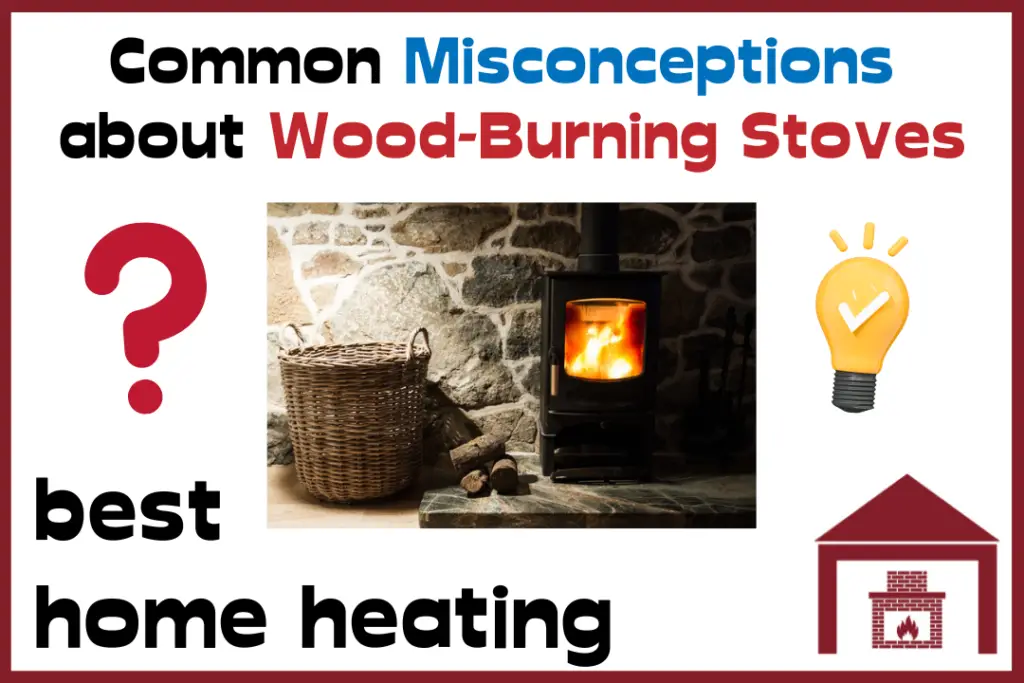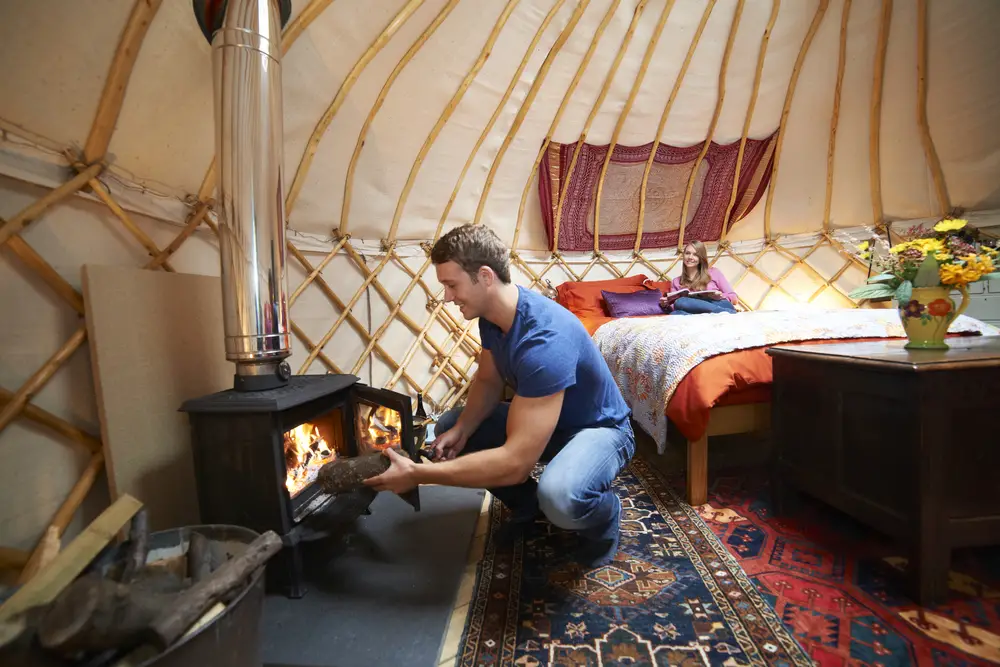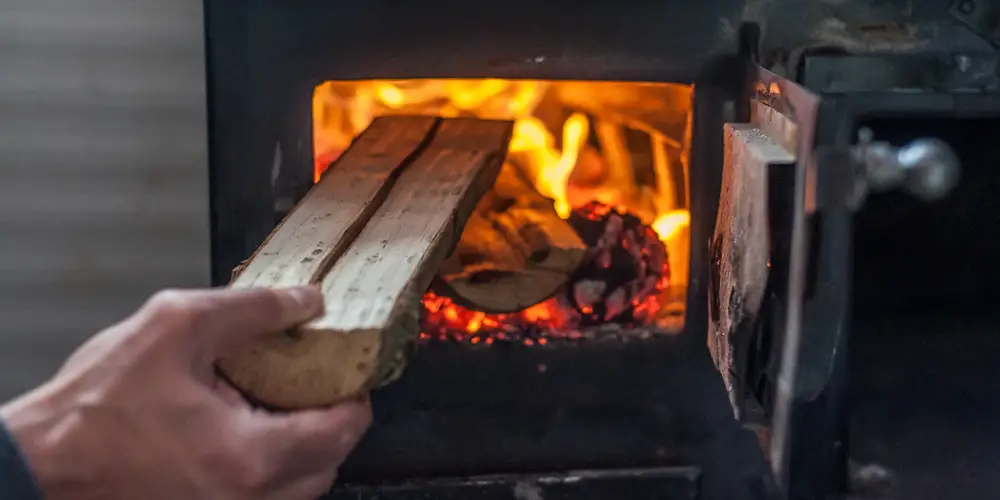Wood-burning stoves have long been a popular choice for heating homes, but amidst their charm, there are several common misconceptions that deserve clarification.
Some people mistakenly assume that wood-burning stoves are inefficient, hard-to-operate, and bad for the environment. Some say that wood-burning appliances are illegal in the UK and USA. The truth is, modern catalytic and non-catalytic stoves are efficient, easy-to-use, and perfectly legal!
The goal of this post is to debunk some popular misconceptions about wood-burning stoves. Read on to find out more about the facts straight.

Debunking the myths about wood-burning stoves
Before we debunk the myths about wood-burning stoves, let’s take a look at the myths and facts at a glance. The table below show them all:
| Myths | Facts |
| Wood-burning stoves are bad for the environment | Modern wood-burning stoves are 80-90% efficient |
| It’s hard to use a wood-burning stove | Wood stoves are pretty user-friendly |
| Wood-burning stoves are illegal in the UK | There are smoke-controlled areas in the UK where you are allowed to use only DEFRA-approved stoves |
| You can burn any type of wood | You must burn only sufficiently seasoned wood |
| You must clean your wood burner every time before you put in firewood | It’s easier to light a fire if there is a layer of ash in the bottom |
Are wood-burning stoves bad for the environment?
Environmentally conscious people tend to stay away from wood-burning stoves due to their perceived contribution to climate change. The fact is, wood is remarkably safer than fossil fuels in terms of their environmental impact.
As a tree grows, it absorbs a certain amount of carbon dioxide from the atmosphere. When the tree is burned or decomposed, the same amount of CO2 is released back into the atmosphere, and as a result there is no net gain in CO2. Of course, the combustion of wood locally pollutes the air, but in the long run, the act has very little contribution to global warming.
In contrast, when you burn fossil fuels such as coal, oil and gas, the combustion releases carbon dioxide and other gasses that were trapped in the earth for millions of years.
There are other reasons wood is considered environmentally friendly. Homeowners buy firewood from local suppliers, so there are low emissions from transportation. Also, wood is a relatively sustainable source of energy because as you cut down trees you can plant new ones.
In the last few decades, wood-burning stoves have undergone huge transformations. The new catalytic and non-catalytic wood stoves are 80-90% efficient. Compared to wood-burning fireplaces, a modern Ecodesign stove emits 90% fewer airborne particulates.
Is it hard to use a wood-burning stove?
There are several types of wood-burning stoves, there may be a little bit of a learning curve depending on the type of stove you are using. But in general, it’s pretty easy to use a unit. Even if you are technically inept, you will find the mechanism of this heating appliance fairly easy to understand.
Before you make a fire, carefully read the manufacturer’s instructions. Use some kindling such as newspaper or small pieces of wood. Be sure to use firewood with less than 20% moisture content, because even if you manage to start a fire with wet wood, the combustion will create plenty of smoke. If you buy the wood from a supplier, make sure the fuel is certified as Read to Burn.
In order to keep the fire burning and prevent sparks from getting out, keep the door closed. And when you need to open the door, do it slowly. Add larger logs when you have a steady fire.
Use a shovel to clean the ashes out, but leave an inch or so in the bottom. Keep in mind that the efficiency of a wood-burning stove largely depends on regular maintenance. Using a stove gets easier as you do it regularly.

Are wood-burning stoves illegal in the UK?
No, wood-burning stoves are perfectly legal in the UK. However, according to the new regulations enacted since January 2022, all new wood-burning stoves must meet a standard known as Ecodesign. The sales of older, inefficient models are prohibited, but if you are using a stove that does not meet the Ecodesign standard, the law does not prohibit you from using your stove.
In other words, now people living in the UK can buy only Ecodesign stoves. It is a standard set by the European Union, aimed to reduce the emissions of smoke and harmful particles. The regulations include putting limits on the emissions of carbon dioxide, nitrogen oxides, carbon monoxide, and organic gaseous compounds.
A stove is considered Ecodesign Ready if it has a seasonal efficiency of at least 65%. Each Ecodesign stove is independently tested by the authorities. It is to be noted here that some new catalytic wood-burning stoves are 80-90% efficient.
In smoke control areas, people can burn only authorised fuels. The list of authorised fuels does not include wood, and that makes some people assume that wood-burning stoves are not allowed in smoke control areas. The fact is, you can use an exempt appliance and burn wood with a moisture content of no more than 20%. An exempt appliance basically refers to a DEFRA-certified appliance.
Can you burn any wood in a wood-burning stove?
No, you can’t. The UK Government has specific guidelines for the sales of wood for domestic use. People can sell only “Ready to Burn” firewood in volumes within 2 cubic metres.
Ready to burn firewood refers to wood with a moisture content of no more than 20%. Sellers must get their wood fuel certified before they sell it. A seller may have to pay a penalty fine of £300 for storing insufficiently seasoned wood.
Burning wet wood is illegal and inefficient, but it is also important to remember that not all types of wood are equally efficient. Hardwoods are better than softwood because the former are denser, but it’s a good idea to use softwood as kindling.
Some examples of hardwoods are balsa, alder, hickory, beech, maple, mahogany, teak and oak. Softwood trees include Douglas fir, cedar, pine, spruce, juniper, yew and redwood. Softwoods are typically not as expensive as hardwoods. One advantage of using softwoods is that they dry quickly.

Is it safe to leave ash in a wood-burning stove?
You have to remove ash from your wood-burning stove from time to time, but it is not a good idea to clean the stove entirely. This is because a thin layer of ash—about 20 mm in depth—will make it easier for you to start a new fire.
A thin layer of ash also aids the combustion of new firewood. And as the fire subsides, the ash can retain the heat for several hours. If you obsessively clean the stove, the metal base may suffer permanent damage over time.
Conclusion
When we talk about wood-burning stoves, we should talk about modern catalytic and non-catalytic wood-burning stoves. That’s because manufacturers are now required to produce wood-burning appliances that meet strict emission standards. In the UK, you can now buy only Ecodesign stoves. And in the USA, all new stoves are EPA-certified.
Humans have burned wood for millennia, and a modern, sophisticated wood-burning stove allows you to keep burning firewood while keeping your carbon footprint low. Hopefully, this post has helped remove some of your misconceptions about wood-burning stoves.


